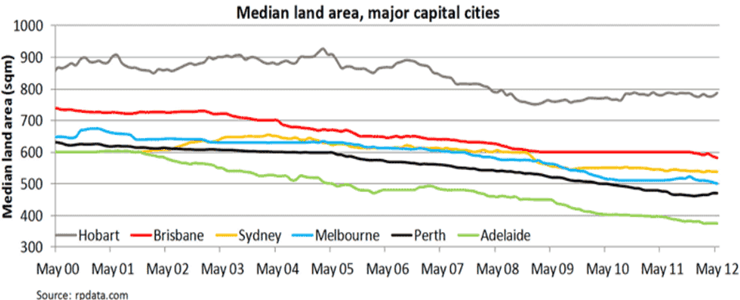
It seems I am not the only one that is skeptical of the Treasury’s and Reserve Bank of Australia’s (RBA) goal of housing construction filling the void left as the mining investment boom unwinds, with a number of industry players questioning whether housing demand and construction would pick-up in any significant way as interest rates are cut.
Mark Chellew, managing director of building materials provider, Adelaide Brighton, has come out arguing that the housing sector is not headed for another boom as structural changes reduce the need for single family homes:
“I don’t see a property boom coming… I think younger people are deciding to have children much later; they are deciding to stay in apartments and they are staying at home longer. At the same time, there are a lot of empty bedrooms around Sydney with older parents.
Australia has fundamentally changed from having large nuclear families to smaller units in smaller-sized apartments…
The industry is going through a structural change and the boom and busts are gone. There’s only going to be a mild upturn compared to where we are now…
I think if Australian housing starts got to 145,000 we’d all be happy, that might be the new norm.”
Meanwhile, one of Australia’s largest real estate groups, Raine & Horne, and Australia’s largest developer, Stockland, claim that they have seen minimal pick-up in housing demand as interest rates have been cut:
Sean Green, Raine & Horne’s manager of operations for four states, and Mark Hunter, Stockland’s director of residential, said interest rate cuts did not appear to be spurring the market as they had done in the past…
“We’re not actually seeing a great increase in activity due to interest rate cuts,” Mr Green told the conference. “It’s a little less than we expected.”
Mr Hunter said consumers were “still sitting on their hands”…
Mr Hunter predicted the housing market would be a “slow grind” for the next two years.
Mr Hunter said governments continued to make the mistake of stimulating demand through housing grants without increasing the supply of affordable housing. By insisting on rules like excessively large backyards and “gold plated” housing blocks, governments had increased the cost of servicing a plot of land, and therefore the final product.
“Most house and land packages in our market range from about $300,000 upwards,” Mr Hunter said. “But there’s an enormous sector of the market that cannot even afford $300,000. There has to be a change in the standard of living in terms of, what do I really need?”
Mr Hunter is correct that new house and land packages are too expensive, thanks to the exorbitant cost of land, but wrong to suggest that prices are too high because of “excessively large backyards and ‘gold-plated’ housing blocks”. After all, median vacant land prices have surged as block sizes have shrunk, as illustrated by the below chart from RP Data:

And it’s not just block sizes that are shrinking, with Stockland earlier this year revealing that it had progressively shrunk the size of its houses in order to improve affordability:
Stockland says that in 2007 it was building an average four-bedroom house of 300 sq m. This year, that same category of offering is sized at only 241 sq m.
In 2007 an average three-bedroom house was 247 sq m, and it is now 181 sqm.
The land the houses sit on has also been cut from an average 569 sq m to an average 451 sq m…
”We’re often asked how low can our lots go, what size can our lots go to, before we come under pressure either because of customers pushing back, not liking it, or we are forced to become a builder ourselves in our right and create integrated product,” Mr Quinn said. ”We recently trialled land in each of our states of about 250 sq m. In fact, in one state it was down to 210 sq m with a freestanding house. They are our best sellers.
”People’s resistance to small lots and small houses has gone. It’s now about affordability.”
Twitter: Leith van Onselen. Leith is the Chief Economist of Macro Investor, Australia’s independent investment newsletter covering trades, stocks, property and yield. Click for a free 21 day trial.

